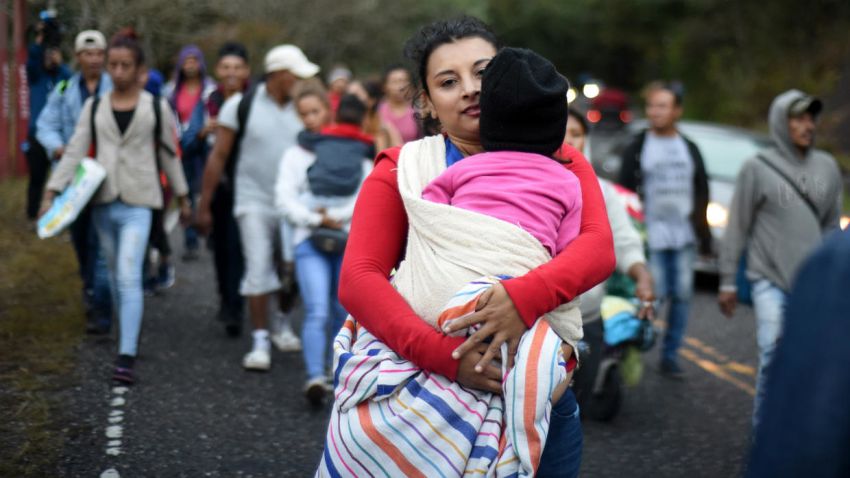
Guatemalan police and United States Immigration and Customs Enforcement (ICE) officials stationed on the border between Guatemala and Honduras forced some members of a caravan of Honduran refugees and migrants to return home on January 16.
Another Honduran caravan that reached the Mexican border with Guatemala the following week was violently attacked by border officials.
One family of refugees — all minors — forced to return to Guatemala, cried as they told EFE news agency they were fleeing Honduras because of threats from the Mara Salvatrucha gang — a transnational criminal organisation.
US agent Alex Suarez told the LA Times that ICE was in Guatemala to train Guatemalan authorities in immigration control, and US embassy spokesperson Chris Jones said Homeland Security personnel — ICE and Customs and Border Protection (CBP) — were in Guatemala “providing advisory and capacity building support” to deal with migrants.
However, it seems the ICE officials are the ones needing training, as Central American countries have travel agreements that require Guatemala to grant migrants passage.
The Central America 4 Free Mobility Agreement (CA-4) stipulates freedom of movement without any impediment, including border checks, between El Salvador, Guatemala, Honduras and Nicaragua. The only exception is that minors should have identification, but this is to prevent trafficking of people, not migration.
Nevertheless, mid last year Guatemala’s Minister for Internal Affairs Enrique Degenhart announced that his country was working with the US to reduce the number of migrants passing through Guatemala, to break up caravans, and subject families to DNA testing. Degenhart said Guatemala was looking at revising the CA-4 agreement.
Migrants and refugees have been travelling to the US through Guatemala and Mexico in groups of hundreds or thousands for their own security. On their own, they are vulnerable to extortion, kidnapping, and rape. According to Mexican women’s organisation Fondo Semillas, 60% of girls and women migrants are raped on their journey through Mexico.
But some government officials and media have criminalised the caravans, with Degenhart stating: “For us, caravans are a criminal way of moving or trafficking or smuggling people through our territory.”
Degenhart, speaking mid last year, also admitted that the US officials in Guatemala were there to “confront those caravans”. A US official, speaking off the record, said US officials would be in Guatemala to stop migrants journeying through Mexico to the US.
Guatemala’s own deputy security minister, Luis Arevalo, said the country’s police force had sufficient training, which suggests the US presence in the country is not about that.
Meanwhile, before the caravans departed Honduras, Mexican officials had also announced that refugees and migrants would not be allowed to continue to the US, but would be granted visas if they agreed to stay in Mexico.
This position is a change to Mexican President Andres Manuel Lopez Obrador’s initial position of offering residential visas for humanitarian reasons to all Central American migrants in the caravan that crossed into Mexico in January last year. As he began his presidential term, Obrador promised that Mexico would always protect the human rights of migrants, and would not deport anyone seeking asylum.
In May last year, US President Donald Trump threatened Mexico with an escalating series of tariffs unless the country put a stop to migrants passing through there to get to the US.
Following that, arrests of under-age and adult migrants and refugees shot up in Mexico, reaching a total of 179,335 (50,621 of them children) last year. Almost all of them were eventually deported.
Early last year, the US government also cut aid to Central America, after Trump said the region was not doing enough to stop the caravans.
On the Mexican-Guatemalan border, officials fired tear gas at members of a caravan as they tried to cross the Suchiate River on January 20. Video footage shows the Mexican National Guard throwing objects at unarmed migrants.
Sandra Vasquez Diaz, a Mexican activist at the Casa Tochan migrant refuge in Mexico City told Green Left that preserving the trade relationship between Mexico and the US comes at a cost “that affects all of us”.
“The Mexican state is reproducing the discriminatory and racist discourse that comes from the US (and is aimed at Mexico), and it is using this discourse to prevent migrants from exercising their human rights,” she said.